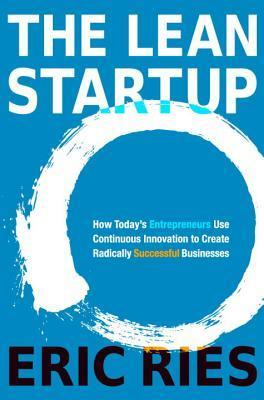More on this book
Community
Kindle Notes & Highlights
by
Eric Ries
Read between
July 5 - October 5, 2023
The goal of a startup is to figure out the right thing to build—the thing customers want and will pay for—as quickly as possible. In other words, the Lean Startup is a new way of looking at the development of innovative new products that emphasizes fast iteration and customer insight, a huge vision, and great ambition, all at the same time.
A startup is a human institution designed to create a new product or service under conditions of extreme uncertainty.
If we wound up taking a wrong turn, I’d have to take comfort in the fact that at least we’d learned something important.
Unfortunately, “learning” is the oldest excuse in the book for a failure of execution. It’s what managers fall back on when they fail to achieve the results we promised. Entrepreneurs, under pressure to succeed, are wildly creative when it comes to demonstrating what we have learned. We can all tell a good story when our job, career, or reputation depends on it.
Our main concerns in the early days dealt with the following questions: What should we build and for whom? What market could we enter and dominate? How could we build durable value that would not be subject to erosion by competition?1
Metcalfe’s law: the value of a network as a whole is proportional to the square of the number of participants.
Personally, I was worried that the low quality of the product would tarnish my reputation as an engineer.
In retrospect, one good decision we made was to set clear revenue targets for those early days. In the first month we intended to make $300 in total revenue, and we did—barely. Many friends and family members were asked (okay, begged). Each month our small revenue targets increased, first to $350 and then to $400. As they rose, our struggles increased. We soon ran out of friends and family; our frustration escalated. We were making the product better every day, yet our customers’ behavior remained unchanged: they still wouldn’t use it.
Customers could not tell us what they wanted; most, after all, had never heard of 3D avatars. Instead, they revealed the truth through their action or inaction as we struggled to make the product better.
When it came time to pivot and abandon that original strategy, almost all of my work—thousands of lines of code—was thrown out. I felt betrayed.
Learning to see waste and then systematically eliminate it has allowed lean companies such as Toyota to dominate entire industries.
Lean thinking defines value as providing benefit to the customer; anything else is waste.
In a manufacturing business, customers don’t care how the product is assembled, only that it works correctly.
But in a startup,...
This highlight has been truncated due to consecutive passage length restrictions.
customer is and what the customer might find valuable are unknown, part of the very uncertainty that is an essential pa...
This highlight has been truncated due to consecutive passage length restrictions.
The irony is that it is often easier to raise money or acquire other resources when you have zero revenue, zero customers, and zero traction than when you have a small amount. Zero invites imagination, but small numbers invite questions about whether large numbers will ever materialize. Everyone knows (or thinks he or she knows) stories of products that achieved breakthrough success overnight.
if you cannot fail, you cannot learn.
His hypothesis was that customers were ready and willing to buy shoes online. To test it, he began by asking local shoe stores if he could take pictures of their inventory. In exchange for permission to take the pictures, he would post the pictures online and come back to buy the shoes at full price if a customer bought them online.
Zappos began with a tiny, simple product. It was designed to answer one question above all: is there already sufficient demand for a superior online shopping experience for shoes?
To apply the scientific method to a startup, we need to identify which hypotheses to test. I call the riskiest elements of a startup’s plan, the parts on which everything depends, leap-of-faith assumptions. The two most important assumptions are the value hypothesis and the growth hypothesis. These give rise to tuning variables that control a startup’s engine of growth. Each iteration of a startup is an attempt to rev this engine to see if it will turn. Once it is running, the process repeats, shifting into higher and higher gears.


